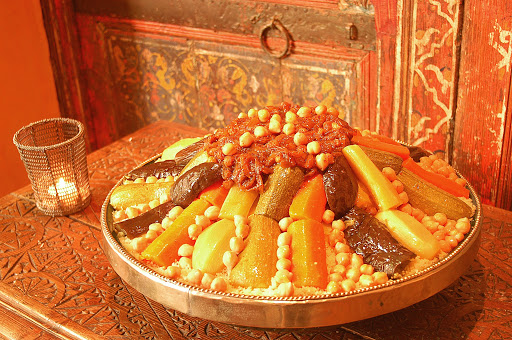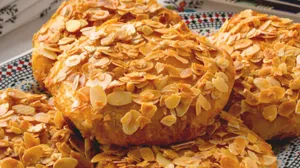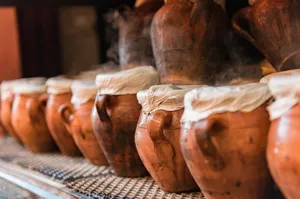The Couscous is the most popular dish in North Africa. Its delicious taste and its high nutritional value gave the traditional plate the distinguished position that it deserves.
5 Amazing Facts About Couscous
Each plate has a story. The story could surprise many. In this article, we will tell you some amazing facts about Moroccan Couscous.
What Is Couscous?
The flour of durum wheat is the origin of high-quality pasta. This same flour is also the origin of Couscous grain.
When we cook Couscous, the small grains increase in size. They become softer and flavorful.
We usually add vegetables and meat when cooking the Couscous. For sure, the Couscous is a complete dish rich in nutrients.
Here is some amazing facts about Couscous.
1. The Couscous Is Thousands Years Old

Traditional Couscous Pot
The Couscous dish is a part of the Berber culture.
Centuries ago, many western travelers mentioned the Couscous in their books. Charles Andre Julian reported that the Couscous appeared in most regions of North Africa.
The word “Couscous” is an Amazigh word. It means how we prepare small wheat grains. And recent research confirmed the Amazigh roots of this plate.
Archeologists discovered pots containing Couscous grains that belonged to the Berber king Massinisa.
2. The Couscous Has Many Benefits
The Couscous contains many nutrients and antioxidants. It helps to protect and regenerate the cells of the body. It also contains potassium. Potassium regulates blood pressure and facilitates the movement of bones and joints. Couscous also helps to regulate the work of the heart and revives it from diseases.
We can say that the Couscous is a very healthy plate.
Related posts
3. The Couscous Is A Meal For All Occasions

Couscous Offred During A Religious Celebration
There are many ways to prepare the Couscous.
Often we serve the Couscous in a giant bowl studded with chunks of meat, chickpeas, and raisins.
The Couscous is the meal we serve at weddings, funerals, and all gatherings.
4. The Couscous Is A Global Heritage
The Couscous is a ritual rooted for centuries.
UNESCO registered the Couscous in the list of intangible world heritage.
Algeria, Morocco, Mauritania, and Tunisia presented a joint file. The four Maghreb countries entitled their file "Couscous: Knowledge, Skills, and Rituals."
Families served Couscous on all occasions. They served the Couscous as a sign of joy, sorrow, respect, solidarity, and support.
The inhabitants of the region believed in plurality and diversity. And the Couscous is an indication of this belief. To prepare the Couscous, you need to mix many different ingredients.
5. The Couscous Is A Meal That Evolved

Couscous with foie gras and argan oil
During the last decades, the Couscous became global. It gained more importance in different countries.
Now, the Couscous is present on the menu of the best restaurant around the world. And each chef invented different ways of making the dish.
© 2022 Marrakech Tricks. All rights reserved | Design by Marrakech Web Design





